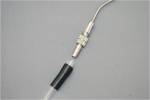 It’s time again for AudiologyNOW! and the magic number is #1760. Why is this the magic number? Each individual number in the series holds significance as it pertains to the American Academy of Audiology’s annual meeting known as AudiologyNOW! For example, the number one in #1760 reflects the fact that
It’s time again for AudiologyNOW! and the magic number is #1760. Why is this the magic number? Each individual number in the series holds significance as it pertains to the American Academy of Audiology’s annual meeting known as AudiologyNOW! For example, the number one in #1760 reflects the fact that  AudiologyNOW! is the #1 Audiology convention to attend as it represents the largest gathering of audiologist in one location worldwide. This year, over 8,000 or so attendees are expected to congregate in the great city of Chicago on April 6-9, 2011. Be sure to check out the downloadable on-line AudiologyNOW! program for details regarding seminars, featured sessions, courses, and other scheduled events.
AudiologyNOW! is the #1 Audiology convention to attend as it represents the largest gathering of audiologist in one location worldwide. This year, over 8,000 or so attendees are expected to congregate in the great city of Chicago on April 6-9, 2011. Be sure to check out the downloadable on-line AudiologyNOW! program for details regarding seminars, featured sessions, courses, and other scheduled events.
 Seven in #1760 stands for the seven employees that will be representing Oaktree Products in the exhibit hall including myself, company owners Bob and Margy Kemp, their son Michael Kemp, conference veterans Alison and Dana, along with our newest customer service representative Maggie. While there will be many products on display, the number six is for the six really
Seven in #1760 stands for the seven employees that will be representing Oaktree Products in the exhibit hall including myself, company owners Bob and Margy Kemp, their son Michael Kemp, conference veterans Alison and Dana, along with our newest customer service representative Maggie. While there will be many products on display, the number six is for the six really  hot products that Oaktree Products is excited to talk to you about including the new BAHA Listener, Digital MacroView Video Otoscope, the Adscope 657 Amplified Electronic Stethoscope, the Clarity AlertMaster System, and the Heine HR Loupe & 3S LED Headlight Set, just to name a few. Finally, the “O” in #1760 isn’t a zero; rather, it is the letter “O” to
hot products that Oaktree Products is excited to talk to you about including the new BAHA Listener, Digital MacroView Video Otoscope, the Adscope 657 Amplified Electronic Stethoscope, the Clarity AlertMaster System, and the Heine HR Loupe & 3S LED Headlight Set, just to name a few. Finally, the “O” in #1760 isn’t a zero; rather, it is the letter “O” to  remind you that the Oaktree Products booth number for this year’s AudiologyNOW! convention is #1760! Be sure to stop by our booth in the exhibit hall not only to say hello, but to check out all the great products we have to offer! We hope to see you in Chicago! If not, perhaps you can make it out to Boston for the 2012 AudiologyNOW!
remind you that the Oaktree Products booth number for this year’s AudiologyNOW! convention is #1760! Be sure to stop by our booth in the exhibit hall not only to say hello, but to check out all the great products we have to offer! We hope to see you in Chicago! If not, perhaps you can make it out to Boston for the 2012 AudiologyNOW!






























